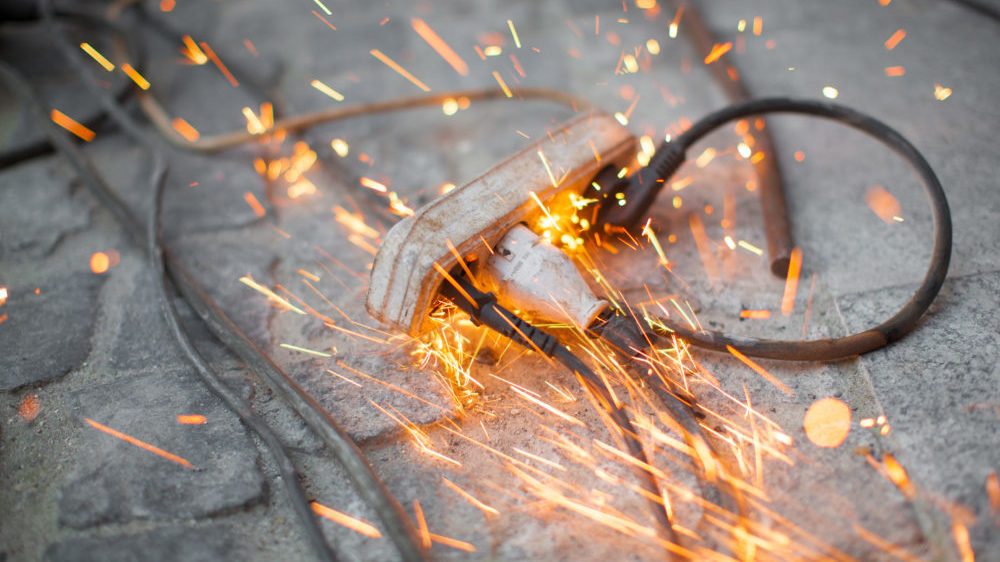
Electrical malfunctions are the top cause of large residential fires, and electrocution deaths are frighteningly high. Electricity powers much of our modern lives but is a potentially dangerous resource that must be used properly to avoid danger. Taking precautions can help you enjoy this valuable resource safely around your home.
The shocking numbers
More than 360,000 residential fires occur annually in the U.S., and electrical malfunction is their leading cause. Nearly 400 people are accidentally electrocuted annually as well, with an average of 70 fatalities.
The age of your home
If your house is more than 25 years old, its electrical system may not be adequate to handle the number of devices we use today. Today’s appliances are more energy efficient, but home entertainment systems, computers, chargers and the like load up your home’s electrical grid. If you notice that your lights dim slightly when some devices are turned on, or your circuit breakers often trip, have a professional electrician evaluate the adequacy of your home’s electrical system.
GFCIs and tamper-resistant receptacles
Two relatively new developments have revolutionized the safety of residential electricity. Ground fault circuit Interrupters, or GFCIs, prevent electrical shocks and fires by stopping the flow of electricity when a device plugged into a circuit draws more electricity than can be used safely. Building codes now require that GFCIs be installed in the kitchen, bathroom, and garage because of these rooms’ proximity to water.
Tamper-resistant receptacles are designed to protect children from pushing foreign objects into wall outlets. Internal spring-loaded barriers inside the receptacle will not yield to inward pressure unless both sides of the socket are pressed in with a proper plug. This prevents children from inserting objects into one side of the socket.
If you live in a home built before GFCIs and tamper-resistant receptacles were in wide use, have an electrician install them.
Placement of receptacles
Most residential building codes require electric sockets be spaced every 12 feet in areas such as living rooms and bedrooms, within 3 feet of the outside edge of a bathroom sink, and every 4 feet in kitchens. Because appliances are typically used in kitchens and bathrooms, all sockets over counters should be GFCIs on a 20-amp circuit. If you notice that your outlets get warm to the touch, crackle or buzz or have turned yellow or brown around the prong holes, the receptacle is overheating and dangerous. Stop using it and have an electrician replace it.
Power strips and extension cords
Power strips are a handy way to increase the number of devices that can be plugged into a single outlet. But avoid plugging heat-generating devices such as space heaters or hairdryers into the strips, which can overload them.
If you rely on multiple power strips and extension cords around the house, you probably don’t have enough outlets. Have an electrician evaluate and add more electric sockets.
Large appliances should be plugged directly into wall sockets. Plugging them into an extension cord or power strip can cause overheating and fire.
To avoid a fire risk, vacuum the underside of your refrigerator every few months to remove combustible dust from around the wiring and motor.
Electricity dos and don’ts
- Don’t use ladders, saws and pruning shears close to overhead power lines around your house.
- Don’t lay a hairdryer down on a wet counter or the edge of a bathtub or shower.
- When installing or working on a ceiling fan, light fixture or anything connected to electricity, turn the power off at the circuit breaker, not just the wall switch. And be sure to unplug any device before working on it.
- Do not use power tools near electrical wires or water sources. Use hand tools with insulated grips. When using a wet-dry vacuum, follow the manufacturer’s instructions regarding electrical safety.


